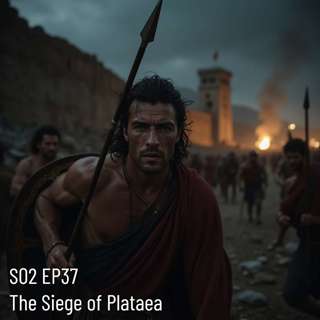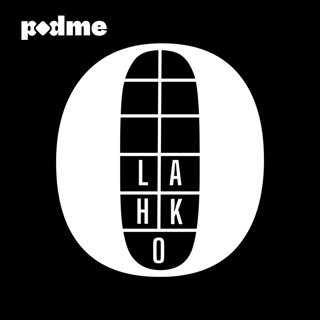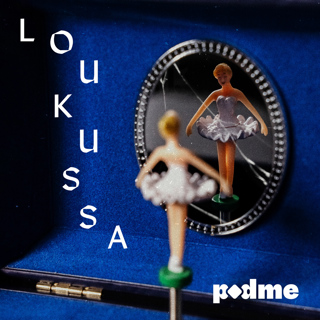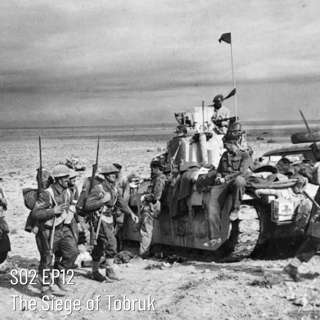
The Siege of Tobruk, 1941. Hitler's Advance East from Africa Stopped. First Real NAZI Defeat. Oil Fields Secured. Suez Saved.
British troops refused to break, grinding down the German-Italian offensive in Egypt. Their defiance did more than just slow the Axis advance—it kept them from launching a full-scale assault on Malta, the island fortress that stood between Hitler and total control of the Mediterranean. Tobruk. April 10 - December 7, 1941. Axis Forces: Unknown, Possibly ~ 35,000 Troops. Allied Forces: ~ 22,000 Troops. Additional Reading and Episode Research: Jewell, Derek. Alamein and the Desert War.Macksey, K...
5 Helmi 19min
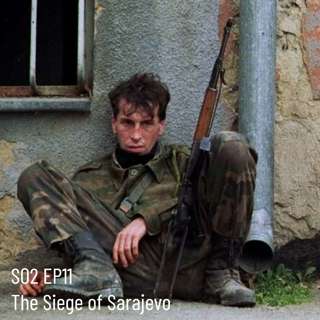
The Siege of Sarajevo, 1991 - 1995. Ethnic Cleansing, Genocide. First UN Intervention with Force.
The relief of Sarajevo forced a turning point. Under relentless NATO bombardment and international pressure, Serbian forces withdrew, and for the first time, the government of Serbia recognized Bosnia-Herzegovina’s independence. It was a reluctant acknowledgment, extracted not through diplomacy but through force. This marked the first decisive action by the United Nations in post-Cold War Europe. After years of inaction and failed peacekeeping efforts, the international response to this war s...
4 Helmi 16min

The Siege of Kinsale, 1602. Ireland Falls to British Rule. Irish Seed the American Revolution.
The English victory crushed Ireland’s last real chance at freedom, locking the island under English rule, its warriors dead, its leaders in flight, and its people left to endure centuries of occupation. But the Irish who escaped carried their hatred of the British across the Atlantic, and when revolution came to America, they stood at the front lines, ready to strike back. Kinsale. October 2, 1601 - January 3, 1602. English Forces: 6,800 Infantry, 600 Cavalry. Spanish Forces: ~ 3,300 - 3,4...
31 Tammi 22min

The Siege of Fort Niagara, 1759. Iroquois Decide the Fate of France and Britain, Setting in Motion Events Leading to Iroquois Annihilation.
The British victory at Fort Niagara shattered French dominance and secured their grip on the Great Lakes, a turning point in the French and Indian War. But for the Iroquois, their cooperation in that war was not a triumph, it was the beginning of the end. Once the most formidable native power in the Northeast, they had gambled on British strength, believing it would protect their place in the new order. Instead, they were cast aside, their lands devoured by the very empire they had helped to ...
30 Tammi 21min

The Siege of La Rochelle, 1627 - 1628. Protestant Huguenots Flee France, Seeds of Values Resulting in American Revolution Planted in the Colonies.
The fall of La Rochelle marked the definitive end of French toleration for Protestantism, dismantling any illusions of coexistence under the Edict of Nantes. This event triggered an exodus of Huguenots, tens of thousands fleeing persecution to seek refuge abroad, reshaping societies across Europe and the Americas. La Rochelle. September 10, 1627 - October 27, 1628. Huguenot Forces: Unknown, Likely Entire Male Population of La Rochelle. British Forces: ~ 5,000 Troops. French Forces: ~ 30,000 ...
29 Tammi 21min

The Siege of Louisbourg, 1745. Overwhelming American Victory Plants Overconfidence That Dictated Military Doctrine for Two Centuries.
The American victory instilled an unwarranted confidence in the colonies’ military prowess, fostering a belief that their amateur forces could stand toe-to-toe with professional armies. Yet, this triumph was overshadowed by the betrayal felt when Louisbourg, hard-won through their blood and sacrifice, was handed back to France in a distant peace negotiation. This decision by the British government deepened colonial resentment, planting the seeds of hostility that would only grow in the decade...
28 Tammi 22min

The Siege of Pensacola, 1781. Spanish Covert Aid to American Rebels. Spanish Victory over British on the Gulf Coast Paves Way for America's Westward Expansion.
Spain’s resounding victory at Pensacola delivered them West Florida and, with it, a decisive blow to British ambitions in the Americas. Coupled with their relentless campaigns across the Mississippi Valley and along the Gulf Coast, the Spaniards dismantled Britain’s claim to the sprawling frontier between the Appalachians and the Mississippi River, leaving British forces isolated and their colonial aspirations in tatters. This triumph not only redrew the map but ensured that Spain’s influenc...
24 Tammi 21min
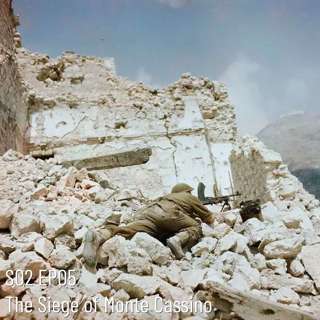
The Siege of Monte Cassino, 1944; WWII. Allied Road to Rome via Gustav Line. Mixed Force Inspires NATO Formation.
The Germans’ relentless occupation of Cassino turned the town into an unyielding bastion, anchoring the Gustav Line. This fortress, besieged by Allied forces in wave after wave of bitter combat, became the lynchpin of German resistance, halting the advance through Italy’s blood-soaked terrain and barring the road to the eternal city of Rome. Monte Cassino. January 17 - May 22, 1944. Allied Forces: ~ 300,000 Mixed Troops. Nazi Forces: ~ 100,000 Troops. Additional Reading and Episode Research...
23 Tammi 22min
